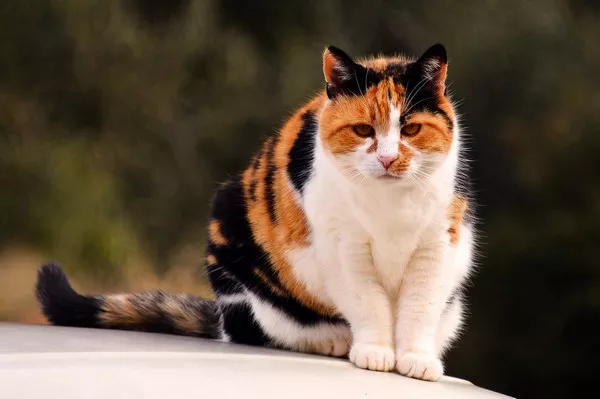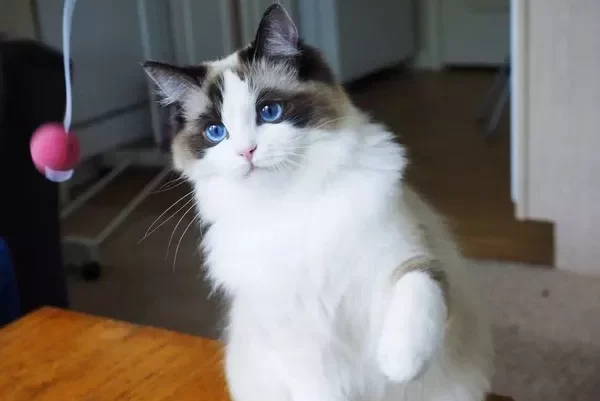Calico cats, with their distinctive tri-colored coats, are known for their unique beauty and often quirky personalities. However, owners of calico cats may encounter a phenomenon known as “going limp” or “ragdolling.” This behavior, characterized by sudden relaxation and apparent loss of muscle control, can be alarming for cat owners. In this article, we delve into the fascinating world of calico cats and explore the reasons behind this intriguing behavior, commonly referred to as Feline Ragdoll Syndrome.
What is Feline Ragdoll Syndrome?
Feline Ragdoll Syndrome, also known as “going limp,” is a peculiar behavior observed in some calico cats. It involves a sudden and temporary loss of muscle tone, causing the cat to become floppy and unresponsive to external stimuli. This behavior can mimic the limpness of a ragdoll, hence the name.
Understanding Calico Cats
Calico cats are not a specific breed but rather a coat color pattern found in various cat breeds, including domestic shorthairs and longhairs. They are characterized by their distinct tricolor coat, typically consisting of white, black, and orange (or cream) patches. The unique genetic makeup of calico cats, resulting from the interaction of multiple coat color genes, contributes to their striking appearance.
Factors Contributing to Feline Ragdoll Syndrome
While the exact cause of Feline Ragdoll Syndrome is not fully understood, several factors may contribute to this behavior in calico cats. Understanding these factors can provide insight into why some cats exhibit this intriguing phenomenon.
1. Genetic Predisposition: Some experts believe that Feline Ragdoll Syndrome may have a genetic component, particularly in calico cats. The complex interplay of genes responsible for the cat’s coat coloration may also influence neurological pathways, leading to the temporary loss of muscle control observed in this syndrome.
2. Neurological Sensitivity: Calico cats, like many other breeds, may exhibit variations in neurological sensitivity. Certain stimuli or experiences may trigger a response in the cat’s nervous system, leading to the sudden relaxation and limpness characteristic of Feline Ragdoll Syndrome. These triggers could include changes in environment, handling, or emotional arousal.
3. Behavioral Response: Feline Ragdoll Syndrome may also be a behavioral response to specific situations or stimuli. Some calico cats may exhibit this behavior as a form of stress or submission in response to perceived threats or discomfort. In such cases, the cat’s natural instinct may be to “freeze” or become passive as a means of self-preservation.
Observing Feline Ragdoll Syndrome
Recognizing the signs of Feline Ragdoll Syndrome can help cat owners understand and respond appropriately to this behavior. While not all calico cats may exhibit this phenomenon, being aware of its occurrence can prevent unnecessary concern or alarm.
1. Sudden Relaxation: The hallmark sign of Feline Ragdoll Syndrome is the sudden and dramatic relaxation of the cat’s muscles, causing it to go limp. This relaxation may occur spontaneously or in response to specific stimuli, such as being picked up or petted.
2. Lack of Responsiveness: During an episode of Feline Ragdoll Syndrome, the cat may appear unresponsive to external stimuli. It may not react to touch, sound, or movement, giving the impression of being “floppy” or inert.
3. Temporary Duration: Feline Ragdoll Syndrome is typically temporary, lasting only a few seconds to minutes before the cat returns to its normal state. While the duration may vary between individuals, episodes of limpness are generally brief and self-resolving.
Managing Feline Ragdoll Syndrome
While Feline Ragdoll Syndrome itself is not harmful to calico cats, it’s essential for owners to understand how to manage and respond to this behavior appropriately. Here are some strategies for managing Feline Ragdoll Syndrome:
1. Provide a Safe Environment: Create a safe and secure environment for your calico cat to reduce stress and anxiety. Minimize exposure to potential triggers, such as loud noises or unfamiliar visitors, and provide hiding spots or elevated perches for your cat to retreat to if needed.
2. Gentle Handling: Handle your cat gently and respectfully to avoid triggering episodes of Feline Ragdoll Syndrome. Avoid sudden movements or rough handling, and allow your cat to approach you on its terms. By respecting your cat’s boundaries, you can help minimize stress and anxiety.
3. Regular Veterinary Check-ups: Schedule regular veterinary check-ups to monitor your cat’s overall health and well-being. Your veterinarian can assess your cat for any underlying medical conditions that may contribute to Feline Ragdoll Syndrome and provide guidance on managing the behavior effectively.
4. Behavioral Modification: If Feline Ragdoll Syndrome is triggered by specific stimuli or situations, consider implementing behavioral modification techniques to desensitize your cat and reduce its response. Gradually expose your cat to the trigger in a controlled manner, rewarding calm behavior and gradually increasing exposure over time.
Conclusion
Feline Ragdoll Syndrome is a fascinating yet often misunderstood behavior observed in some calico cats. While the exact cause remains elusive, factors such as genetic predisposition, neurological sensitivity, and behavioral responses may contribute to this phenomenon. By understanding the signs and triggers of Feline Ragdoll Syndrome and implementing appropriate management strategies, cat owners can ensure their calico companions lead happy, healthy lives. If you’re concerned about your cat’s behavior or overall well-being, consult with your veterinarian for personalized guidance and support. With proper care and attention, calico cats can continue to enchant and delight their owners for years to come, even with their occasional episodes of “going limp.”



























